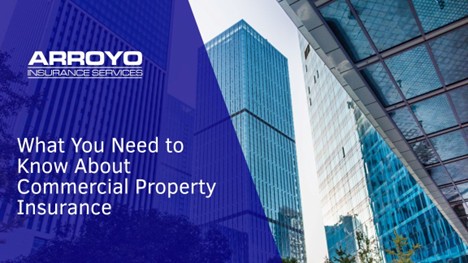
In the fast-paced world of business today, protecting your business from the unknown is more than just an issue of caution; it is essential. All insurance policies are protected from liability, which, if fallible, could shut down the operation: Business insurance acts as a critical safety net, guarding your assets, employees, and reputation.
However, dealing with these complicated business insurance policies requires a strategic approach to find the perfect match for you. This article offers a step-by-step process for choosing the coverage your organization needs to be resilient when challenges arise.
Understanding the Fundamentals of Business Insurance
There is no one-size-fits-all answer for business insurance. Because different end verticals contain different companies, sizes, and methods of operation, they want specific coverage.
Insurance essentially protects against financial loss due to property damage, legal claims, employee injuries, or business activity disruptions. Get this: 40% of small businesses never reopen after a disaster, according to the Federal Emergency Management Agency (FEMA), which is a powerful motivator to get serious about risk management for your business before a crisis hits.
For businesses looking into insurance options, Arroyo South Bay provides business insurance policies that help address risk management concerns. We have resources focused on providing industry-specific solutions to help companies avoid coverage gaps that could put them at risk.
Key Types of Business Insurance
General Liability Insurance
General Liability Insurance (GLI) is a cornerstone for most businesses. It insures you against third-party claims for bodily injury, property damage, or advertising injuries (such as defamation or copyright infringement).
For example, if a customer slips and falls in your office, GLI would cover medical bills and legal costs if they sue you. This policy also covers product liability claims, which is important for manufacturers and retailers.
GLI is important, but it doesn’t have coverage for professional errors, injuries to employees, or cyber events. These exposures require businesses to layer additional policies.
Commercial Property Insurance
Commercial Property Insurance helps cover physical assets buildings, equipment, inventory, and furnishings from fire, theft, vandalism, or natural disasters. Coverage like this would allow a retail store to recover losses if a storm tore through its business, for example. However, standard policies may exclude floods or earthquakes, requiring independent endorsements.
FEMA’s statistics underscore the catastrophic results of underinsuring physical assets. Companies in regions subject to disasters should turn to experts to consider supplemental coverage options.
Insurance for Workers’ Compensation
Most state laws require businesses with employees to have Workers’ Compensation. It pays for medical bills, costs of rehabilitation, and lost wages for work-related injuries or illnesses. The Bureau of Labor Statistics (BLS) states there were 2.8 million nonfatal workplace injuries in 2022, demonstrating the extensive threat of employee accidents.
High physical risk industries (like construction or manufacturing) demand strong Workers’ Comp policies. If it does not comply with state regulations, it could face fines or lawsuits.
Errors, omissions, and professional liability insurance
Errors and Omissions (E&O) Insurance, also known as professional liability insurance, protects service-oriented businesses (think consultants, architects, or accountants) from negligence, misrepresentation, and/or undelivered service claims. A client who has lost money as a result of bad advice could bring about an expensive lawsuit, so E&O coverage is a must.
Cyber Liability Insurance
Cyberattacks are increasingly common, and that’s particularly true for businesses that handle sensitive data. It covers costs incurred by a data breach, like legal fees, costs of notification of the customers, and credit monitoring of the affected customers.
The Federal Trade Commission (FTC) reported a 30% increase in reported cyber incidents in 2022, indicating the urgent requirement for this coverage.
Business Interruption Insurance
Natural disasters or equipment malfunctions can shut down operations for weeks. This type of insurance compensates for lost income and operating expenses incurred while the business is down.
A restaurant that’s closed because of a kitchen fire, for instance, could use this coverage to pay rent and salaries while repairs are made. To learn more about these policies, see Arroyo South Bay’s blogs for details on coverage options for commercial clients.
Assessing Your Business’s Unique Risks
Choosing appropriate insurance starts with risk assessment. Consider these factors:
Industry-Specific Exposures
A tech startup has different risks than a construction firm. Healthcare professionals prioritize malpractice insurance, and retailers seek out coverage to protect their elimination. Review historical claims data within your industry to discover common weaknesses.
Business Size and Structure
Sole proprietors may need less coverage than corporations with several employees. But even small businesses can get sued. The U.S. Small Business Administration (SBA) stated that 75% of companies are underinsured, and most of the time, they underestimate their liability exposure.
Geographic Location
More specialized property coverage is needed for businesses in hurricane, wildfire, or flood-prone areas. Thus, urban companies are more likely to have a high risk for theft or vandalism than firms in rural areas.
Regulatory Requirements
Some industries, such as transportation or healthcare, are subject to stricter federal and state insurance requirements. Failure to comply can lead to fines or revocation of licensure.
Strategies for Choosing the Right Business Insurance Coverage
Evaluate Insurance Providers
Work with carriers focused on your particular industry. Evaluate their financial stability, including ratings from agencies such as A.M. Best or Standard & Poor’s. A provider’s claims response time and customer service reputation are just as important.
Understand Policy Terms
Deductibles, coverage limits, and exclusions vary greatly. One example of this is a Cyber Liability policy that may exclude social engineering fraud if not properly endorsed. Brokers can help navigate complicated terminology and prepare you for what you may not know about the claims process.
Customize Your Policy
Standard policies have gaps in many instances. Endorsements can offer coverage for specialized risks, like equipment breakdowns or reputational damage.
Common Mistakes to Avoid when getting Business Insurance
Underinsuring to Save Costs
Choosing barebones coverage to save on premiums is a false economy. One lawsuit or calamity could deplete a policy’s limits, leaving your business with the remaining costs to pay.
Failing to Update Policies
New or renewed locations, increased services, or growth of revenue — all require adjustments to policy. A policy that is out of date may reflect risks long past.
Overlooking Exclusions
Do not assume anything is covered until it is confirmed in writing. For example, mold damage is usually excluded under most Property Insurance policies, requiring a separate endorsement.
Regular Policy Reviews and Adjustments
Annual reviews guarantee that your coverage keeps up with your business. Reassessment is almost always triggered by one of the bigger four, which are:
- Operational Changes: acquisitions, mergers, or new lines of products.
- New Risks: Cyber risks or regulatory changes.
- Inflation: An increasing cost of replacement for certain factors.
Selecting the best business insurance requires diligence, knowledge, and prevision. With an awareness of your risks, a decision to choose comprehensive policies, and the avoidance of common pitfalls, you can protect the future of your company.
Arroyo South Bay offers commercial insurance solutions to help businesses find the right coverage. In an uncertain world, the right coverage goes beyond a line item — it’s the bedrock of enduring success.


